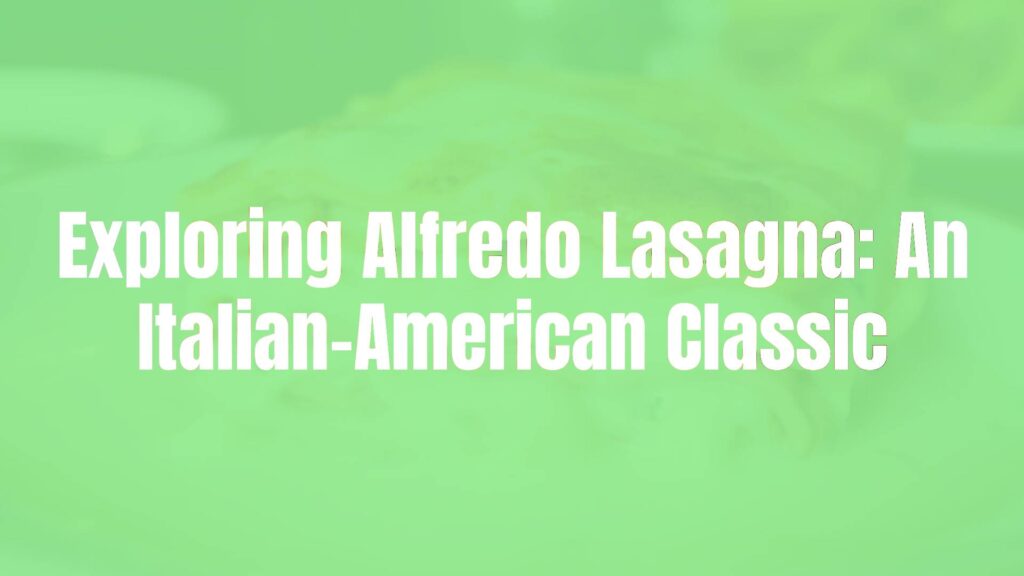Understanding Alfredo Lasagna
Alfredo lasagna marries two beloved Italian-American creations: the creamy richness of Alfredo sauce and the layered comfort of classic lasagna. Unlike the traditional red-sauced lasagna alla Bolognese, Alfredo lasagna forgoes the use of tomato, offering a white, cheesy, and deeply savory profile. This variation replaces the staple meat ragù with a bechamel or Alfredo-based sauce, making it a standout for those who favor a lush, dairy-forward dish.
Origins and Background
While neither Alfredo sauce nor lasagna originated as they exist today within Italy, their adaptation in North American kitchens has led to countless creative crossovers. Alfredo sauce, attributed to early 20th-century Rome, was popularized abroad and often enriched with cream. Lasagna has roots in Emilia-Romagna but typically features a tomato-meat sauce. Alfredo lasagna is a relatively modern invention—often considered an Italian-American evolution—crafted in home kitchens and restaurants seeking a milder, velvety twist on the classic.
Key Ingredients and Hallmarks
At its core, Alfredo lasagna comprises layers of wide lasagna noodles interspersed with rich Alfredo sauce and a selection of cheeses. Key components usually include:
- Alfredo sauce – Traditionally, a blend of butter and Parmesan cheese, often enriched with heavy cream for extra silkiness.
- Lasagna noodles – Either classic boiled noodles or oven-ready varieties.
- Cheese – Besides Parmesan, plenty of mozzarella and ricotta are typically added, lending a gooey, creamy texture.
- Proteins and Vegetables – Many versions include shredded chicken, spinach, mushrooms, or a medley of roasted vegetables.
The finished lasagna is unctuous and creamy, sporting a lightly golden top and a tender, decadent interior. Its flavor is savory with subtle nutty notes from Parmesan and a luxurious dairy presence dominating each bite.
Popular Variations
Alfredo lasagna’s versatility lends itself to a range of adaptations across households and restaurants. Some common variations include:
- Chicken Alfredo Lasagna – Shredded or diced cooked chicken layered with the sauce.
- Vegetable Alfredo Lasagna – Spinach, mushrooms, zucchini, or broccoli for a lighter and colorful profile.
- Seafood Alfredo Lasagna – Incorporating shrimp, crab, or scallops for a coastal-inspired version.
- Four-Cheese Alfredo Lasagna – Featuring a mixture of cheeses such as provolone or fontina for complex flavor.
Ingredient substitutions are also popular; those avoiding dairy often use vegan cheeses and plant-based milk to achieve a similar creamy consistency. Gluten-free noodles can be used to accommodate dietary restrictions.
Serving and Pairing Suggestions
Served bubbling hot from the oven, Alfredo lasagna is often accompanied by a lightly dressed green salad and crusty bread to balance the richness. Its velvety texture and mild, buttery flavor pair well with crisp Italian white wines like Pinot Grigio or a light Chardonnay. For non-alcoholic options, sparkling water with a twist of lemon helps cleanse the palate between bites. This dish is a crowd-pleaser at festive gatherings and makes excellent leftovers, as the flavors meld beautifully overnight.
Cultural Resonance
While not part of Italy’s strict culinary canon, Alfredo lasagna reflects the ongoing evolution of Italian-inspired cuisine abroad. It showcases the love of indulgent, comforting flavors and the creative spirit found in Italian-American kitchens, where blending traditions often yields delicious results.

